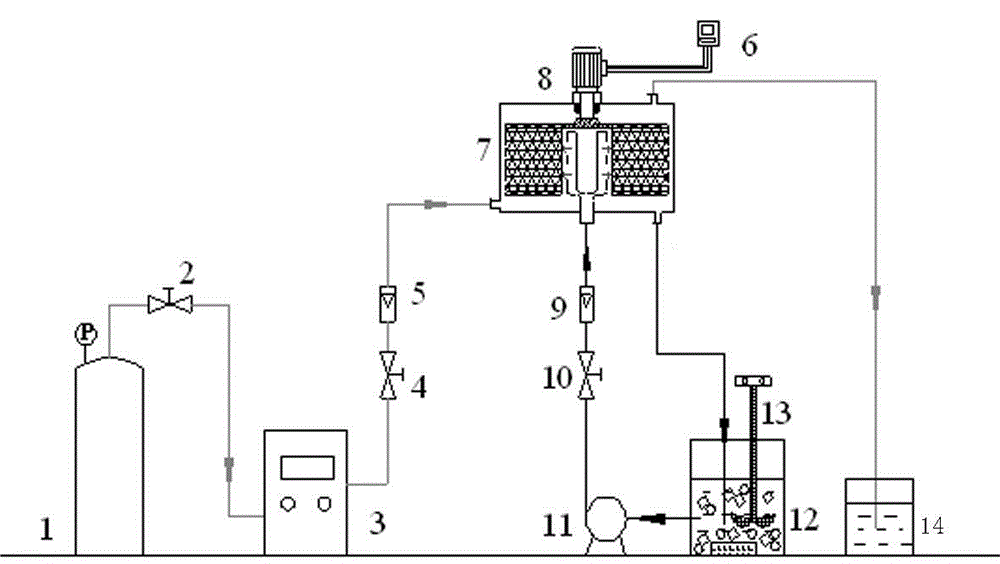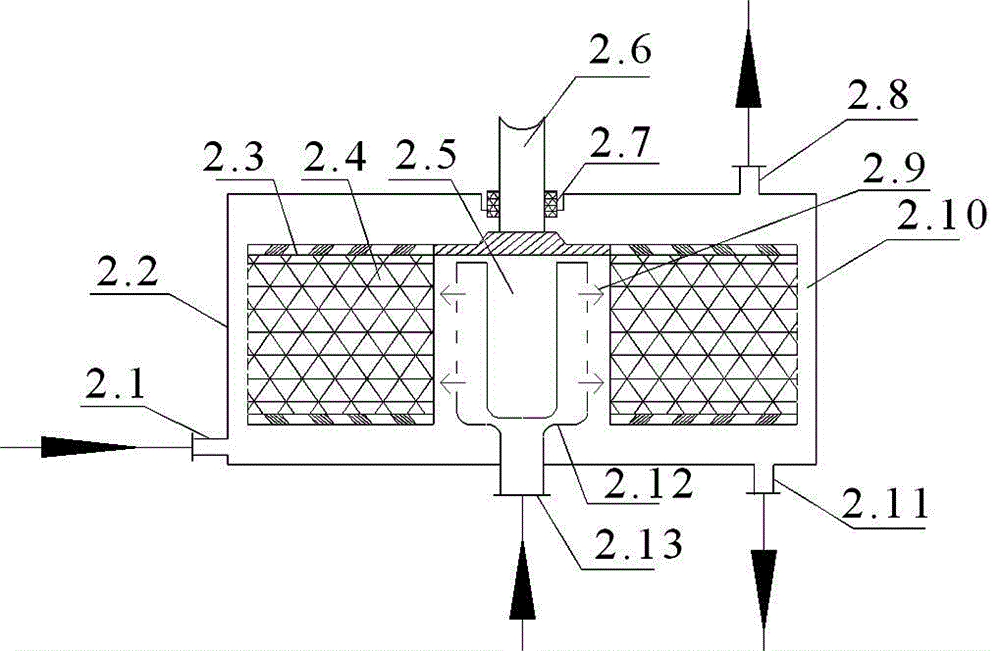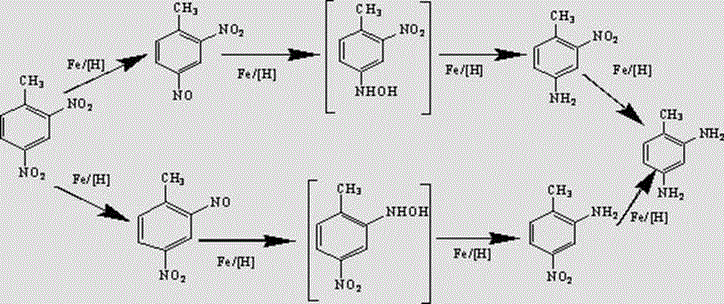Method and device for adsorbing, reducing, oxidizing and degrading nitrobenzene wastewater
A technology of oxidative degradation and nitrobenzene, which is applied in chemical instruments and methods, water pollutants, water/sewage multi-stage treatment, etc., to achieve the effects of convenient operation, reduced treatment cost and improved treatment efficiency
- Summary
- Abstract
- Description
- Claims
- Application Information
AI Technical Summary
Problems solved by technology
Method used
Image
Examples
Embodiment 1
[0047] Example 1: Treatment of dinitrotoluene (DNT) in waste water from a propellant and explosive factory. The initial concentration of dinitrotoluene in the wastewater is 180mg / L. Micro-electrolysis is used to treat 1.5L of wastewater. At pH=3, the amount of iron powder added is 30g / L, and the mass ratio of iron to carbon is Fe:C=1:1. The reaction time is 2 hours, and the stirring speed of the stirrer is 200r / min, more than 80% of the nitro compounds are converted into aniline substances, and the liquid-gas volume ratio of the micro-electrolyzed water and ozone is 400L / m 3 , the ozone concentration is 50mg / L, the rotation speed of the rotating packed bed is 500rpm, and after 60 minutes of degradation, the pollutant removal rate reaches more than 95%; while the wastewater without micro-electrolysis pretreatment has the same treatment capacity and ozone concentration The removal rate of its nitro compounds is only 50%. Micro-electrolysis pretreatment can significantly improve...
Embodiment 2
[0048] Embodiment 2: Treatment of TNT wastewater. The concentration of trinitrotoluene in the waste water is 16 mg / L, and the pH value is adjusted to 3.0 with dilute sulfuric acid. Take 2L of water sample, and use micro-electrolysis to pretreat the wastewater. The amount of iron powder added is 10g / L, the mass ratio of iron to carbon is 1:1.5, the stirring speed is 400r / min, and the reaction time is 1.5h. More than 100% of nitro compounds are converted into aniline substances, and the liquid-gas ratio of micro-electrolysis water and ozone is 100L / m 3 , the ozone concentration is 25mg / L, the height of the rotating packed bed is 18cm, the diameter is 12cm, and the rotation speed is 1200rpm. After 30 minutes of reaction, the removal rate of organic pollutants in wastewater is almost 100%. However, the pollutant removal rate of the micro-electrolysis / ozone process is only about 40% when the liquid-gas ratio, ozone concentration, stirring speed, and reaction time remain unchanged....
Embodiment 3
[0049] Embodiment 3: Treatment of nitrobenzene wastewater. The concentration of nitrobenzene in the wastewater is 100mg / L, and the pH value is adjusted to 2.5. Take 2.5L of water sample, and use micro-electrolysis to pretreat p-nitrobenzene wastewater. The reaction time is 1h, the stirring speed is 600r / min, the iron powder addition is 20g / L, and the iron-carbon mass ratio is 3:1. , the reduction rate is over 90%, and the liquid-gas ratio of micro-electrolysis water and ozone is 50L / m 3 , the ozone concentration is 40mg / L, the height of the rotating packed bed is 18cm, the diameter is 12cm, and the rotation speed is 2000rpm. After 1.5h of reaction, the removal rate of organic pollutants in wastewater is almost 100%. Under the conditions of the same liquid-to-gas ratio, ozone concentration and reaction time, the removal rate of nitro compounds is only 10%. The micro-electrolysis / ozone process has a pollutant removal rate of about 50% when the liquid-gas ratio, ozone concentra...
PUM
 Login to View More
Login to View More Abstract
Description
Claims
Application Information
 Login to View More
Login to View More - R&D
- Intellectual Property
- Life Sciences
- Materials
- Tech Scout
- Unparalleled Data Quality
- Higher Quality Content
- 60% Fewer Hallucinations
Browse by: Latest US Patents, China's latest patents, Technical Efficacy Thesaurus, Application Domain, Technology Topic, Popular Technical Reports.
© 2025 PatSnap. All rights reserved.Legal|Privacy policy|Modern Slavery Act Transparency Statement|Sitemap|About US| Contact US: help@patsnap.com



